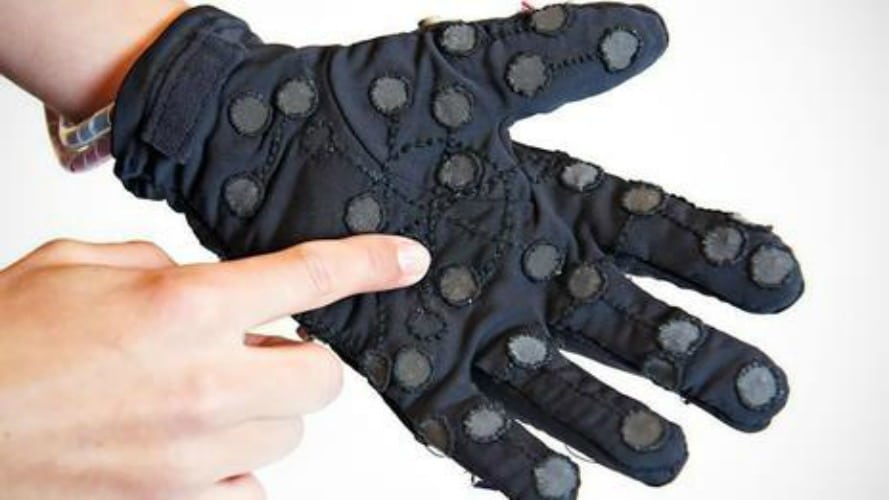It’s easy for conversations about advancing technologies to become oversaturated with discussions of new smartwatches or weighing the pros and cons of the latest cellphones.
The true heroes of technology, however, have always been the innovative creators who make strides in the medical field, revolutionize communication or help create a better understanding of the world around us.
That’s what makes the Mobile Lorm Glove from the Design Research Lab something truly worth getting excited about.
The lab, located at the Berlin University of the Arts, is continuing to develop the Mobile Lorm Glove, a comfortable glove that may forever revolutionize communication for the deaf-blind community.
The basic purpose of the glove is to translate text into a tactile alphabet known as Lorm that deaf-blind people frequently use to communicate with people around them.
In that sense, it is a new-age translator. An impressive feat, but not necessarily adding up to the “revolutionary” claims.
It’s the glove’s implications, however, that are truly groundbreaking.
The glove isn’t just a way for a deaf-blind person to talk to their friends without them having to learn Lorm. It’s a way to expand their freedom, social circles and even their economic opportunities.
The glove mocks the very barriers that used to be frighteningly hard to surpass without such technology — the barriers that once capped a deaf-blind person’s access to the rest of the world.
Pressure sensors on the glove create a sensation of touch on a person’s hand so they can feel the same sensations they would get if someone who understood Lorm was trying to communicate with them.
Since the glove can decode text messages and emails as well, it also makes it possible for deaf-blind people to have interactions with people who aren’t standing right next to them. This means they can receive text messages from a friend, respond to business emails and even dive head first into the digital comedy that rules Twitter.
The glove even comes with features that are similar to auto-correct.
The BBC explains that in Lorm, the letter ‘S’ would be represented by drawing a circle in one’s hand. If the user accidentally draws a square or triangle instead, the glove still recognizes an ‘S’ as the closest letter.
The glove will also allow its wearer to control how quickly the messages are translated in Lorm. So a younger person who may not be efficient in Lorm just yet could choose a slower pace while an adult who has communicated via Lorm for their entire life can use a faster pace.
These features alone make the glove a truly admirable technological feat, but researchers went a step further.
The glove could actually become a key tool for deaf-blind children in school.
“It supports mobile communication over distance… and it enables parallel one-to-many communication, which is especially helpful in school and other learning contexts,” a report by the Design Research Lab explains.
This means a teacher could send messages to an entire class of deaf-blind students rather than be forced to only use one-on-one communication.
Researchers say the glove is still considered a prototype, but based on its early stages, the glove could be one of the greatest technological achievements and finally create a convenient method of communication that will allow deaf-blind people to socialize more, take on certain careers and not feel quite as closed off from the world around them.

